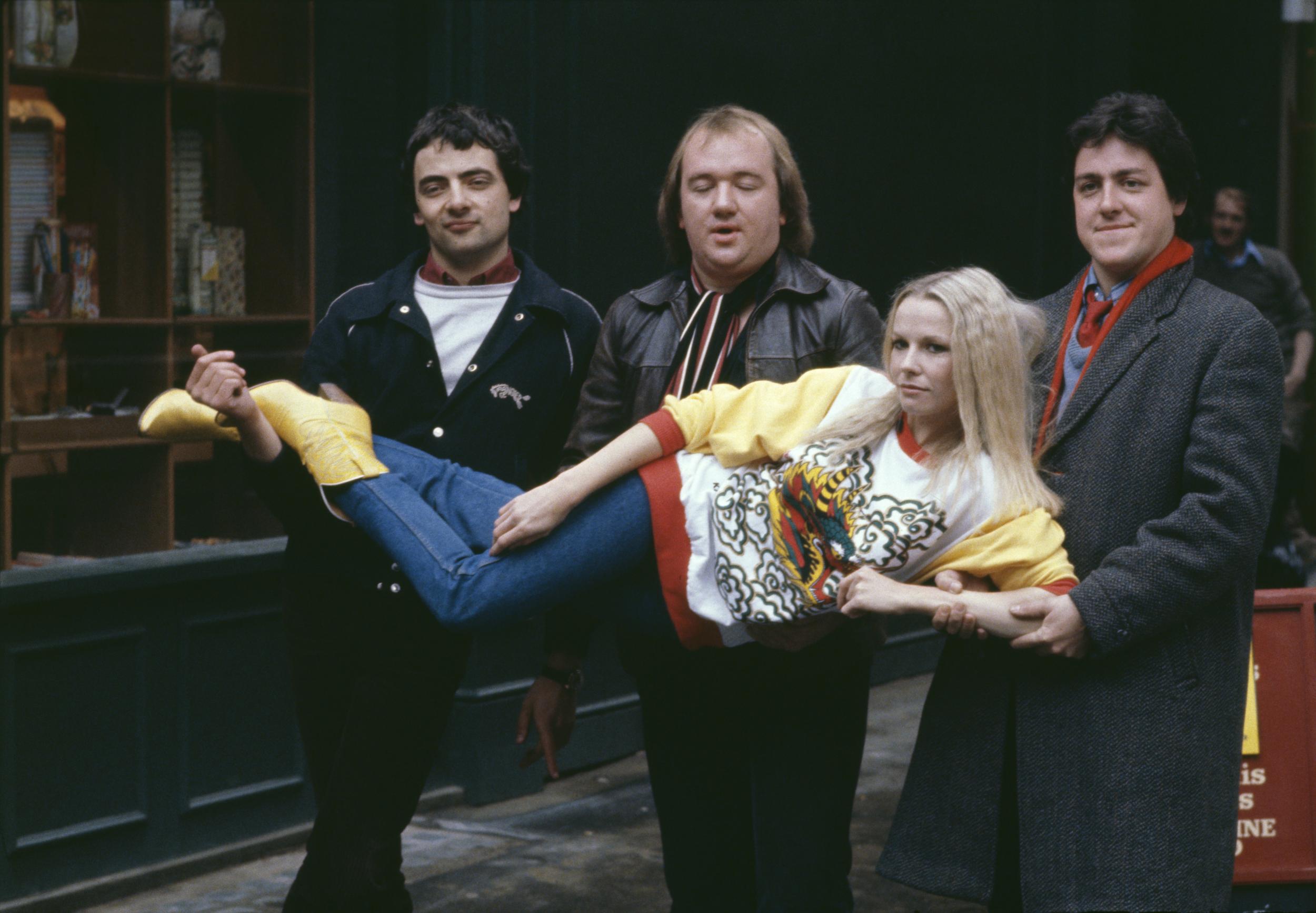Not the Nine O’Clock News at 40: No longer exactly topical but still surprisingly funny
The BBC sketch show not only kick-started ‘alternative comedy’ and some of the most influential careers in British comedy, writes Gerard Gilbert, but also the second great age of TV satire


Your support helps us to tell the story
From reproductive rights to climate change to Big Tech, The Independent is on the ground when the story is developing. Whether it's investigating the financials of Elon Musk's pro-Trump PAC or producing our latest documentary, 'The A Word', which shines a light on the American women fighting for reproductive rights, we know how important it is to parse out the facts from the messaging.
At such a critical moment in US history, we need reporters on the ground. Your donation allows us to keep sending journalists to speak to both sides of the story.
The Independent is trusted by Americans across the entire political spectrum. And unlike many other quality news outlets, we choose not to lock Americans out of our reporting and analysis with paywalls. We believe quality journalism should be available to everyone, paid for by those who can afford it.
Your support makes all the difference.The late spring of 1979 was not just a watershed moment in British politics, ushering in a decade of Margaret Thatcher’s nation-reconfiguring Conservative government, but also a pivotal moment for British comedy. Or, at least, it would be… eventually.
Producer John Lloyd had assembled a team of comedians around the still relatively unknown Rowan Atkinson for a topical sketch show to be called Not the Nine O’Clock News – because it was scheduled on BBC2 against the main BBC1 evening news bulletin.
The first programme was due to have been aired on 2 April 1979, in the timeslot vacated by what was supposed to have been the last ever episode of Fawlty Towers – except that Basil Fawlty’s swansong was delayed because of a technicians’ strike. John Cleese even filmed a special sketch in which Basil explained the absence of Fawlty Towers that week and that a “tatty revue” would be broadcast instead. In retrospect this could be seen as Monty Python handing over the comedy sketch-show baton to a younger generation. The so-called “alternative” comedians.
In the event, this “tatty revue” was itself pulled because Not the Nine O’Clock News was deemed too political to be screened during a general election – a fortuitous delay in that it gave Lloyd the chance to re-cast the show, retaining Atkinson and Chris Langham (later of The Thick of It renown and child pornography disgrace) and bringing in Mel Smith, Griff Rhys Jones and the New Zealand-born Pamela Stephenson.
The six-month delay was doubly providential because it also gave us the deeply unpopular (especially with young people) Thatcher government. During her premiership, TV satire, dormant since the early Sixties and the era of Beyond the Fringe and That Was the Week That Was, rose again with a vengeance. Not the Nine O’Clock News was the neonatal ward of that rebirth.
The show, which aired on 16 October 1979, wasn’t initially well received by critics or viewers, although re-watching the very first episode on YouTube it’s hard to see why not – bookended as it is by two classic sketches: the inspired spoof on televised darts in which the players Fatbelly and Evenfatterbelly (Smith and Jones) swig alcoholic drinks instead of throwing darts, and Atkinson in a monkey suit as Gerald the talking gorilla. “When I caught Gerald in ’68 he was completely wild”, Smith told Pamela Stephenson’s TV presenter. “Wild?’ retorted the gorilla peevishly. “I was absolutely livid!”
There’s also a skit on Question Time, and while today’s under-50s might never have heard of Labour politician Frances Morrell or trade unionist Clive Jenkins, they will be familiar with the format of the programme. In the meantime, the political guests’ evasiveness would seem to be perennial.
Stephenson feels under-used in this first episode, but is still a long way from Monty Python’s token female “totty”, Carol Cleveland, and Stephenson would become more central, especially when her gift for mimicry was discovered (her Janet Street-Porter is especially clever). Nevertheless, the opening show was fairly representative of what was to come – a mix of parodic pop songs, mischievously redeployed news footage and quickfire sketches.
But it was Mrs Thatcher and her hugely divisive administration that was the gift that kept on giving to satirists, and John Lloyd, whose first TV production job this was, would go on to help create the defining lampoon of the era, Spitting Image. Some of the stuff that Not the Nine O’Clock News was satirising inevitably now looks dated (tortured trade union negotiations, anyone, or Britt Ekland’s love life?) or even redactable (Cyril Smith and Jimmy Savile as innocent figures of fun), but a lot of it still remains relevant, from pornographic pop videos and the dearth of hospital beds to one skit in which Atkinson plays a hardline MP addressing the Tory party conference on immigration and crime – even if, unlike her fictional counterpart, Priti Patel wouldn’t use the “n word”.

Watch Apple TV+ free for 7 days
New subscribers only. £8.99/mo. after free trial. Plan auto-renews until cancelled

Watch Apple TV+ free for 7 days
New subscribers only. £8.99/mo. after free trial. Plan auto-renews until cancelled

Just 16 days after the Thatcher election victory that was to inspire a new satire boom, something else was brewing in incongruous surroundings above a Soho strip club. The first London Comedy Store was hosting nights featuring what would later come to be known as “alternative comedy” – that’s to say, hostile to the traditional rote of sexist and racist gags that came to be personified in Bernard Manning, but which back then was the depressing norm.
Alternative comedy would truly come of age three years later with the intersecting casts of The Young Ones and The Comic Strip, but it was Not the Nine O’Clock News that paved the way, with its bold refusal to indulge in lazy sexist and racist stereotypes or rely on Two Ronnies-style innuendo and overscripted sketches. In fact, the brevity of many of the skits often exceeded those of its near-direct descendent, The Fast Show.
Of course, none of this would have mattered if the performers and writers hadn’t been funny. Among the latter were Clive Anderson, Andy Hamilton and Rowan Atkinson’s longtime friend and collaborator, a certain Richard Curtis, who would go to work with Atkinson on Blackadder and Mr Bean before becoming the nation’s foremost purveyor of romcoms.
Blackadder would showcase Atkinson’s verbal dexterity, but Not the Nine O’Clock News introduced his rubbery facial expressions, matched if not exceeded by Mel Smith’s wonderfully mobile features – a countenance that one obituarist described after Smith’s untimely death in 2013 as “mugging with a deadpan virtuosity rarely seen since Oliver Hardy in his pomp”.
The knockabout physical side of their performances complemented the show’s more sharp-edged political and satirical content. Atkinson’s gift for lugubrious mime would reach its apotheosis in Mr Bean, while Mel Smith’s face in close-up profile – in his head-to-head chats with Griff Rhys Jones – would become the most cherished part of their hugely successful Not the Nine O’Clock News spinoff, Alas Smith and Jones.

Smith and Jones’s greatest legacy, however, turned out to be off-screen. In 1981, while still working on Not the Nine O’Clock News, they created their own production company, Talkback Productions, initially to make humorous training videos in the style of John Cleese’s Video Arts. Talkback, however, was to produce some of the most influential British comedy of the last 40 years, including The Day Today, Da Ali G Show, Smack the Pony, Green Wing, Brass Eye, I’m Alan Partridge, The Armando Iannucci Shows, Big Train and Meet Ricky Gervais (just to name a few). Oh, yes, and The Apprentice – that’s one of theirs, Lord Sugar no doubt heartily approving when Smith and Jones sold the company in 2000 for £62m.
As for Pamela Stephenson, she had tired of comedy by the mid-Eighties, married Billy Connolly and trained as a psychologist with a successful practice in Beverley Hills. Her unhappy experience working as the only woman on a live version of The Comic Strip (“Doing stand-up was like a war with everyone playing this game of ‘I can be funnier than you’”) reflects a still ongoing complaint of female comedians booked on to highly competitive, male-dominated TV panel shows.
These days there is no shortage of satirical news programmes, from Mock the Week to Have I Got News for You to The Mash Report and Frankie Boyle’s New World Order. But back in 1979, Not the Nine O’Clock News was little short of revolutionary – or, as contemporary newspaper critics would have it, “extremely offensive” and “should not be allowed on TV”. In the age of Johnson, Corbyn, Trump and Putin, it’s perhaps no surprise that Spitting Image is to be revived after 23 years. Without Not the Nine O’Clock News, we may have never seen it in the first place.
Join our commenting forum
Join thought-provoking conversations, follow other Independent readers and see their replies
Comments